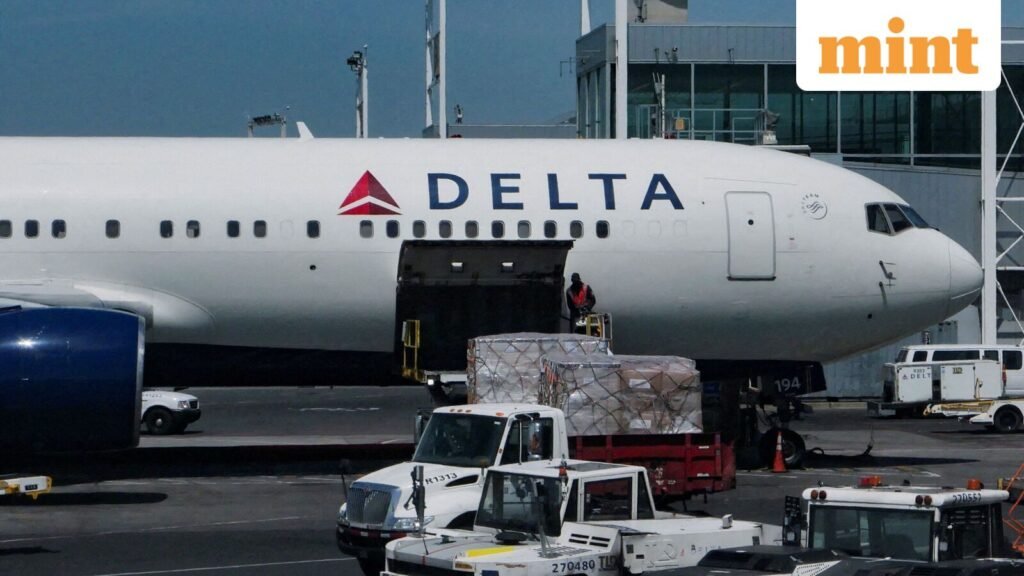.Flight cuts in the US will begin at 4% on Friday, with the percentage being ramped up to 10% by 14 November, a Federal Aviation Administration (FAA) order said citing safety concerns about air traffic control amid the ongoing US government shutdown.
Since the cuts were announced on Wednesday, airlines spent Thursday scrambling to update their schedules: since then, nearly 700 planned flights have been removed from airline schedules as per aviation disruption tracker FlightAware.
The flight cuts are slated to hit 40 airports across the US, including some of the busiest ones such as those near metropolitan areas of New York, Houston, Chicago and Washington, and aviation hubs such as Atlanta, Dallas, Denver, Los Angeles and Charlotte, and North Carolina.
Which airports are affected?
Here are the 40 airports affected by shutdown, as per a list given to airlines, obtained by Associated Press:
1. Anchorage International in Alaska
2. Hartsfield-Jackson Atlanta International in Georgia
3. Boston Logan International in Massachusetts
4. Baltimore/Washington International in Maryland
5. Charlotte Douglas International in North Carolina
6. Cincinnati/Northern Kentucky International in Kentucky
7. Dallas Love Field in Texas
8. Ronald Reagan Washington National in Virginia
9. Denver International in Colorado
10. Dallas/Fort Worth International in Texas
11. Detroit Metropolitan Wayne County in Michigan
12. Newark Liberty International in New Jersey
13. Fort Lauderdale/Hollywood International in Florida
14. Honolulu International in Hawaii
15. Houston Hobby in Texas
16. Washington Dulles International in Virginia
17. George Bush Houston Intercontinental in Texas
18. Indianapolis International in Indiana
19. John F. Kennedy International in New York
20. Harry Reid International Airport in Las Vegas
21. Los Angeles International in California
22. LaGuardia Airport in New York
23. Orlando International in Florida
24. Chicago Midway International in Illinois
25. Memphis International in Tennessee
26. Miami International in Florida
27. Minneapolis/St Paul International in Minnesota
28. Oakland International in California
29. Ontario International in California
30. Chicago O`Hare International in Illinois
31. Portland International in Oregon
32. Philadelphia International in Pennsylvania
33. Phoenix Sky Harbor International in Arizona
34. San Diego International in California
35. Louisville International in Kentucky
36. Seattle/Tacoma International in Washington
37. San Francisco International in California
38. Salt Lake City International in Utah
39. Teterboro in New Jersey
40. Tampa International in Florida
Are international flights affected?
The flight cuts are slated to hit only domestic air travel services, and will not affect international flights, reported Reuters.
That, however, could be subject to change in the days ahead, reported Bloomberg.
What to do if your flight is delayed or cancelled?
In case your flight is delayed or cancelled due to the cuts, passengers are advised to rebook using their airline’s mobile app or website as soon as possible.
Passengers can also reach out to customer care if they need to speak to someone on the phone.
That said, re-bookings happen on a first-come-first-serve basis, and flyers should be aware that there could be a crunch in the number of available seats due to the FAA’s cuts.
“The best thing travelers can do is to be as proactive as possible switching to a new flight. When a flight gets canceled, all of a sudden hundreds of passengers need new itineraries. There may only be a handful of seats left on the best flights, and it’s a first-come, first-(served) endeavor,” Scott Keyes, founder of travel website and flight aggregator Going, told USA TODAY.
Can you get a refund if your flight is cancelled?
Typically, customers are entitled to a full refund if their flight is cancelled for any reason, including due to a shortage of air traffic controllers, if they choose not to fly on the alternative itinerary provided by their airline.
That said, with regard to the present scenario, most airlines haven’t said passengers will get reimbursed if their flight is cancelled and the company is unable to accommodate them on another flight, Bloomberg reported.
Therefore, flyers are urged to pay extra attention when reading the fine print for flight bookings in the coming days.
What to know before going to the airport?
Given that there could be unexpected changes to airline schedules, flyers are urged to keep a sharp eye on email and website alerts from airlines for notifications on changes to schedules.
Passengers are also advised to arrive early at the airport as security checkpoints are getting more strained due to the ongoing shutdown.
It is also recommended that flyers use early check-in facilities whenever possible.

